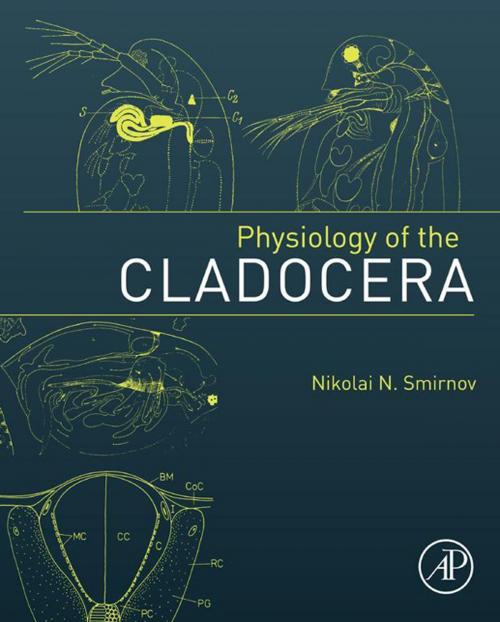Physiology of the Cladocera
Nonfiction, Science & Nature, Science, Biological Sciences, Physiology, Technology, Agriculture & Animal Husbandry| Author: | Nikolai N. Smirnov | ISBN: | 9780123972347 |
| Publisher: | Elsevier Science | Publication: | September 25, 2013 |
| Imprint: | Academic Press | Language: | English |
| Author: | Nikolai N. Smirnov |
| ISBN: | 9780123972347 |
| Publisher: | Elsevier Science |
| Publication: | September 25, 2013 |
| Imprint: | Academic Press |
| Language: | English |
The Physiology of Cladocera is a much-needed summary of foundational information on these increasingly important model organisms. This unique and valuable summary is based on the world's literature, including Russian research not widely available until now. It offers systematically arranged data on the physiology of Cladocera, assisting with explanation of their life and distribution, as well as discussion on directions of future research. Special expert contributions in genetics, immunology, and cytology round out the physiological chapters and provide comprehensive insight into the state of knowledge of Cladocera and its underlying mechanisms.
Cladocera crustaceans make up a significant part of the natural communities and biological productivity of fresh waters. In recent decades, they have become globally studied for many purposes, including systematics, genetic, molecular, ecological and evolutionary biology studies. They are also used as "sentinel" organisms for assessing water quality and the environment. In addition, the genome of Daphnia (a genus within Cladocera) was recently sequenced and published, giving this system a much wider exposure. It has also led to a rapidly growing awareness of the importance of understanding physiological processes as they relate to evolutionary and ecological genomics and ecogenomic toxicology.
Despite the increasing use of Cladocera in research and study, physiological background information on these creatures is fragmentary. Hundreds of unconnected publications have been accumulated on their physiology, and a synthesis and general representation of the literature has been much needed for the many researchers working with this organism. The Physiology of Cladocera stands alone as a valuable and comprehensive offering in this area for many researchers and students.
- Collects and synthesizes from the worldwide literature the state of knowledge of cladoceran physiology
- Forward-looking perspective incorporates information from the emerging technological worlds of genomics, cytology, chemical communication, and immunology
- Provides foundational information on Cladocera physiology for researchers in various fields, including conservation and evolutionary biology, genomics, ecology, ecotoxicology, and comparative physiology
The Physiology of Cladocera is a much-needed summary of foundational information on these increasingly important model organisms. This unique and valuable summary is based on the world's literature, including Russian research not widely available until now. It offers systematically arranged data on the physiology of Cladocera, assisting with explanation of their life and distribution, as well as discussion on directions of future research. Special expert contributions in genetics, immunology, and cytology round out the physiological chapters and provide comprehensive insight into the state of knowledge of Cladocera and its underlying mechanisms.
Cladocera crustaceans make up a significant part of the natural communities and biological productivity of fresh waters. In recent decades, they have become globally studied for many purposes, including systematics, genetic, molecular, ecological and evolutionary biology studies. They are also used as "sentinel" organisms for assessing water quality and the environment. In addition, the genome of Daphnia (a genus within Cladocera) was recently sequenced and published, giving this system a much wider exposure. It has also led to a rapidly growing awareness of the importance of understanding physiological processes as they relate to evolutionary and ecological genomics and ecogenomic toxicology.
Despite the increasing use of Cladocera in research and study, physiological background information on these creatures is fragmentary. Hundreds of unconnected publications have been accumulated on their physiology, and a synthesis and general representation of the literature has been much needed for the many researchers working with this organism. The Physiology of Cladocera stands alone as a valuable and comprehensive offering in this area for many researchers and students.
- Collects and synthesizes from the worldwide literature the state of knowledge of cladoceran physiology
- Forward-looking perspective incorporates information from the emerging technological worlds of genomics, cytology, chemical communication, and immunology
- Provides foundational information on Cladocera physiology for researchers in various fields, including conservation and evolutionary biology, genomics, ecology, ecotoxicology, and comparative physiology















